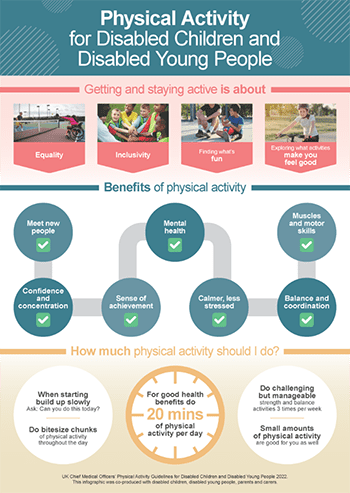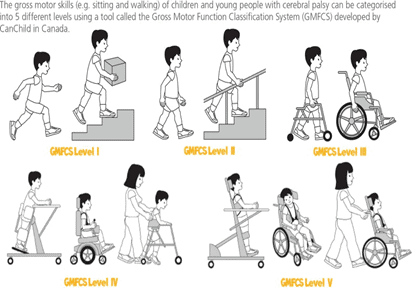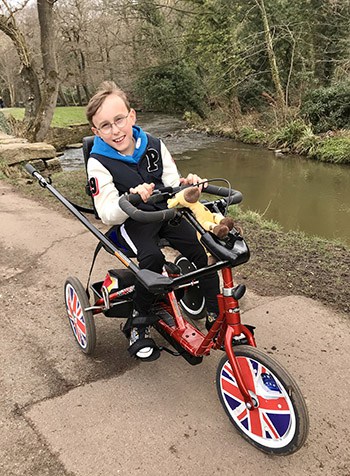EXCLUSIVE: The role of therapeutic equipment in supporting disabled young people to be more physically active

In a proactive move, the UK Chief Medical Officers (CMOs) have recently issued new guidelines to support disabled children and young people to be more physically active.
Kieran Murphy, Clinical Partnerships Manager from Sheffield-based postural support manufacturer Jiraffe, shares his insights and expertise on the new guidelines and their impacts on the health and wellbeing of children with disabilities.
Evidence-based practice and research-based, this work was led by teams based at the University of Durham and the University of Bristol.
The CMOs have said: “We are delighted to present this report and infographic which are an important step forward in addressing the gap in physical activity guidelines for disabled children and disabled young people.
“We encourage schools, parents, carers and healthcare professionals to communicate and promote these guidelines across their wider professional networks to enable appropriate physical activity opportunities for disabled children and disabled young people in their communities.”
The report makes recommendations for the amount, frequency and intensity of physical activity that can be beneficial for health. It suggests children with disability should aim for 20 minutes of physical activity every day, plus strength/balance activities three times per week.
This can be achieved in different ways and by undertaking different activities, such as walking or cycling.
How can therapeutic equipment support these guidelines?
The new guidelines will help provide greater clarity and structure for professionals and carers in knowing what to aim for regarding physical activity goals for the children they care for. Therapeutic equipment can often be the cornerstone to achieving these goals.
Therapeutic equipment has long had an important role to play in supporting mobility and activity in children and young people with disability. Gait trainers, running frames, sports wheelchairs and adaptive tricycles are just a few examples of the types of equipment that can promote physical activity.
Those involved in the child’s care need to fully understand the individual’s physical abilities and limitations to ensure the appropriate mobility device can be used to assist the physical activity.
Regarding children with cerebral palsy, therapists will often use their clinical expertise alongside classification tools, such as the Gross Motor Classification Scale, to assist prescription of the equipment. For example, a child classified as GMFCS level III could be affected by weakness and motor control issues through their lower limbs but have good trunk and upper limb control. As such, the child may benefit from a frame to help conserve energy through their lower limbs and complete a park run or participate in frame football.
Long term, these guidelines could influence service change and funding for equipment to support physical activity in children with disability throughout the UK. They could be used as the source for our future Paralympians and Special Olympic athletes to kickstart their sporting journey or to inspire children to achieve incredible feats.
Tobias Weller BEM, also known as ‘Captain Tobias’, is a perfect example of how therapeutic equipment can help empower children with disability to do amazing things.
Tobias has cerebral palsy and autism. He was nicknamed ‘Captain’ after being inspired by Captain Sir Tom Moore during lockdown to raise money for The Sheffield Children’s Hospital and his school in Sheffield – Paces. He is the youngest person to ever feature in the New Year’s Honours lists.
Tobias completed an Ironman challenge in September 2021, completing the cycling leg of the challenge on a Rifton trike supplied by Jiraffe.
It’s important to remember that physical activity and fitness are relative to the child’s own physical capability and wellbeing. Any amount, however small, of physical activity is good, and it is vital that we try to break up the potentially damaging effects of prolonged periods of being sedentary wherever possible.
Even ‘static’ equipment, such as a standing frame, can still be used to promote activity and improved health. For example, use of a prone standing frame to support the child’s lower limbs and allow for participation in therapy that encourages upper limb and trunk strengthening.
It’s vital when we’re trying to implement these guidelines that the child’s voice is at the heart of everything. Exercise and fitness should be fun and pertinent to the child’s own interests and needs. Use of therapeutic equipment should be tailored to the individual needs of the child to help achieve personal goals and activity levels.
Looking to the future, it is extremely important we continue to push forwards and evolve with our understanding and application of the benefits of physical activity and mobility in children with disability.
Jiraffe can have a hugely influential role to play in changing attitudes and practice, and we can help enable more positive outcomes.
For more information about Jiraffe, visit the website or call 0114 285 3376.




